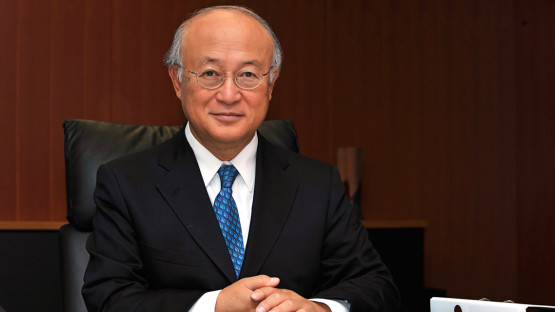The IAEA will collaborate with Cuba to explore the possibility of using nuclear techniques to fight the invasion of the New World screwworm, a killer fly that attacks animals, impacting the economy of the Americas, Director General Yukiya Amano announced in Havana this week. Cuba will join other countries in the region this year in an IAEA supported regional project using the sterile insect technique (SIT) to suppress this pest, he said.
The New World screwworm fly is a pest that attacks injured animals and can kill an adult cow within weeks. Female screwworms lay their eggs close to open wounds from which maggots emerge, which feeds on the live tissue of animals — they are also known as the ‘flesh-eating screwworms’.
If not eliminated quickly, this virulent pest can impact the cattle industry in the Americas. This pest poses a serious threat to Cuba, impacting its meat and milk production and affecting the sustainability of the cattle industry. The economic impact of this pest in North and Central America was estimated at over US $1.5 billion per year before the pest was eradicated from this region using the SIT as part of an integrated control programme that was implemented from the 1950s to 2000s.
Mr Amano informed Cuban officials about the IAEA’s willingness to assist the country again to fight the New World screwworm through capacity building and a feasibility study to control this pest using the SIT as part of the national integrated mosquito programme.
Nuclear techniques for health
Cuban officials also briefed Mr Amano about the latest progress in the use of the SIT to combat the Zika virus outbreak as well as dengue and chikanguniya and the importance of nuclear medicine to meet cancer needs.
During his visit to the Institute for Tropical Medicine “ Pedro Kourí”, Mr Amano and Cuban officials discussed the planned IAEA and United Nations Food and Agriculture Organization joint pilot project to release sterile Aedes mosquito males to suppress mosquito populations in urban areas. Details on the outcome of the recent IAEA and FAO expert mission to assess and prepare the planning of different activities under this project were also provided.
At the Centre for Medical-Surgical Research, Mr Amano inaugurated the installation of a cyclotron facility and positron emission tomography/ computed tomography (PET-CT) X-ray imaging equipment, procured in 2015 to support Cuba’s cancer control programme and treatment.
“The IAEA will focus on developing the human capabilities for managing and operating these new technologies and for the production of radioisotopes,” Mr Amano said, adding that training and sharing knowledge will also strengthen Cuba’s capacity to fulfil the requirements for good manufacturing practices.
At the National Institute for Oncology and Radiobiology, he met with senior medical officials who underlined the progress made in offering radiation medicine and therapy to patients. The officials stressed that more needs to be done to meet the growing challenges in cancer care in the country.
One of the major applications of nuclear technology in Cuba is in the health sector. Here nuclear techniques are applied in diagnosis, therapy and nutrition studies. At present, the country produces, in the Centre of Isotopes (CENTIS) all the ten major radiopharmaceuticals of nuclear medicine that the country uses. CENTIS is a key element in the fight against cancer in Cuba.
Cuban experts have transferred their knowledge to other countries in Latin America and the Caribbean as part of South-South cooperation, and their laboratories and research centres have supported important regional projects in the use of nuclear science and technology.
Mr. Amano highlighted the scientific cooperation of the IAEA with Cuba in health areas aims to improve the technological equipment of its facilities and specialized training and assistance in the production of radiopharmaceuticals, which are essential for the diagnosis and treatment of cancer.
During his three-day stay, Mr Amano also met with Miguel Díaz-Canel the Vice- President of Cuba and informed him on the latest advances in nuclear science and technology that could help countries achieve their development goals.
Mr Amano also held discussions with Vice Minister of Science, Technology and the Environment, Jose Fidel Santana Nuñez; Minister for Science, Technology and Environment, Elba Rosa Prez Montoya; Vice Minister of Health, Roberto Morales Ojeda; Vice Minister of Agriculture, Gustavo Rodriguez Rollero; and, Minister of Foreign Affairs, Bruno Eduardo Rodríguez Parrilla.
In his meetings with senior government officials, Mr Amano underscored the active collaboration with Cuba in strengthening physical security of nuclear facilities, nuclear applications in industry as well as the proper management of radioactive waste. He highlighted that Cuba is an important contributor to the IAEA’s technical cooperation program, not only as a beneficiary, but also in transmitting its experiences to other countries.
Following his Cuban visit, Mr Amano visited Brazil on 23-25 November.



